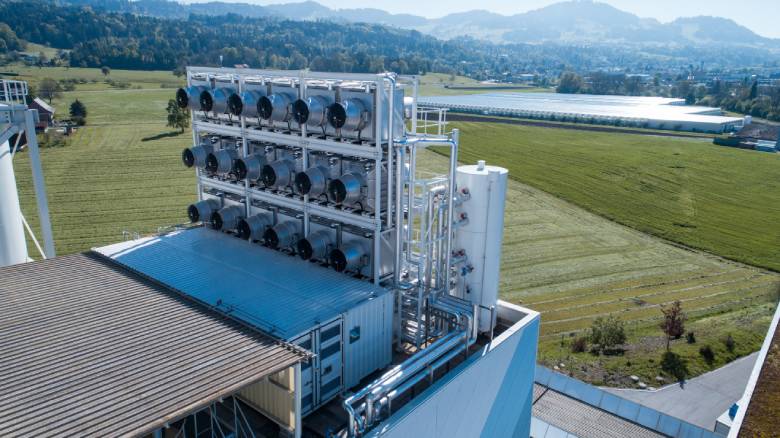The story began in 2007 when a project called Direct Air Capture started around Helisheidi power plant in Iceland. This project was to experiment with the idea that Carbon dioxide from the atmosphere can be pumped into the subterranean pockets where it will solidify into rocks after leaching of Calcium and Magnesium based minerals. The experiment began around Helisheidi power plant, which is the second-largest geothermal power plant in the world.
This experiment had its share of critics. But, in 2016, it attained a breakthrough when it successfully pumped carbon dioxide into the ground using water and showed with the help of tracer elements, that 95% of the CO2 was converted into rocks. This process uses large fans to move air through a filter after which the air is made to pass through a chemical which is an adsorbent for the carbon dioxide. It produces streams of pure CO2 that can be stored. One problem regarding this process is that the captured carbon dioxide can be used in enhanced oil recovery. This is a problem in the sense that the technology which has the potential to clean the air of the anthropomorphic carbon dioxide can be used to dig up oil, which is a major dumper of greenhouse gases in the air.
This method of Carbon Capture and Storage (CCS) is water-intensive as it needs 25 tonnes to capture and store a tonne of CO2. Iceland is working towards scaling up this project to make it store 10000 kg per year. During its earlier phase, one of the primal problems was the Hydrogen Sulphide which used to corrode the equipment used in the capture process. This issue was addressed through improvisations in the equipment design. The improvements in this technology have led the direct air capture technique to function as trees but much more comprehensive in the amount of the CO2 that it captures. Three companies—Switzerland’s Climeworks, Canada’s Carbon Engineering, and the US’s Global Thermostat—are currently building machines that, at reasonable costs, can capture CO2 directly from the air.
This method can be used to capture and store the excess carbon dioxide out of the air around the Columbian basalt regions of the US, Deccan traps in India, etc. So, a location optimization can be done to set up a multitude of such Direct air capture units of CCS across the world, based on the hotspots of CO2 emission and locations of suitable rock systems.
This technology of Direct air capture is a commercially active geoengineering technology that has been commercialized by the three previously mentioned companies as of today. Carbon dioxide captured from the air by the Swiss company Climeworks company is being supplied to a nearby greenhouse where vegetables are being grown. This company has partnered with the Reykjavik energy to pump CO2 into basalt formation. European union’s Horizon 2020 has been associated with these projects as the investing partners.
Technology like the direct air capture has the potential to change or rather undo the large-scale greenhouse gas pollution dumped on the air through decades. One important development in the field is that the cost of capturing Carbon dioxide from the air has reduced from 600 USD in 2011 to a range of 90 to 240 USD now. Such technologies need funding with a sense of optimism for a cleaner greener future rather than the desire to earn higher returns. Such a solution should not be avoided just because of the cost factor involved. Carbon is being actively removed from the geosphere and dumped into the biosphere through the air, water, and other means. The solution needs to be of two dimensions. Carbon must not be dumped into the biosphere or at least the amount of the dumping should be reduced. This is being done by electric vehicle technologies by firms like Tesla. The other dimension of the solution needs the excess carbon to be moved out of the atmosphere and put back into the geosphere. This second solution would become more relevant if we keep on shooting past the carbon budget of the planet in terms of resource consumption for our development. If such projects like the DAC are multiplied and amplified in terms of their scale and scope across the world, it would benefit the world in terms of its environmental health. Such projects can help the world to achieve the targets set at accords like the Paris accord of 2015.





